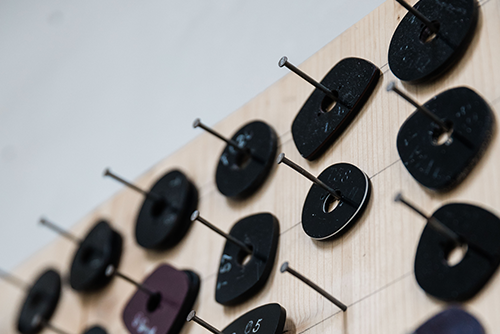WWMO: HOW IS BIO ACETATE MADE
If you’ve been following our What We’re Made Of series, you’ll be familiar with Mazzucchelli’s M49 bio acetate. A key material used as the base for 90% of our frames, M49 is made of 68% natural and renewable materials. Read on below to discover the manufacturing process that takes something as simple as wood fibre and turns it into a brand new, versatile material.
Unlike its predecessor, regular acetate, bio acetate is 68% plant-derived. The main natural ingredient is wood fibres, cultivated and harvested according to the Forest Stewardship Council (FSC) guidelines.

The process begins when the wood fibres are purified and pulped. It then goes through a process called ‘organic synthesis’, where it is mixed with bio-based plasticisers to form bio acetate.

At this stage, a milky translucent material with a similar texture to dough, M49 truly comes alive with the addition of dyes. Mixed into the material in powdered form, the dyed acetate is then repeatedly rolled through metal rollers.

Once the die is thoroughly incorporated, the mixture is placed into box-shaped moulds and hydraulically squeezed into solid blocks. This next stage, called curing, is a signature Italian method that helps force out air bubbles and strengthens the material.

After curing, the block gets sliced into sheets. If a pattern is desired, the material goes through a second stage of curing, where chipped bio acetate pellets of varying colours are strategically added to a solid colour to create a tortoiseshell or marbled effect.

The final stage of the process is heat stabilisation. The sheets of bio acetate are hung up and left for several days at a stable room temperature to ensure they are the perfect consistency, malleable yet strong.
To learn more about Mazzucchelli’s M49 bio acetate, visit the link in our bio or explore their website.


